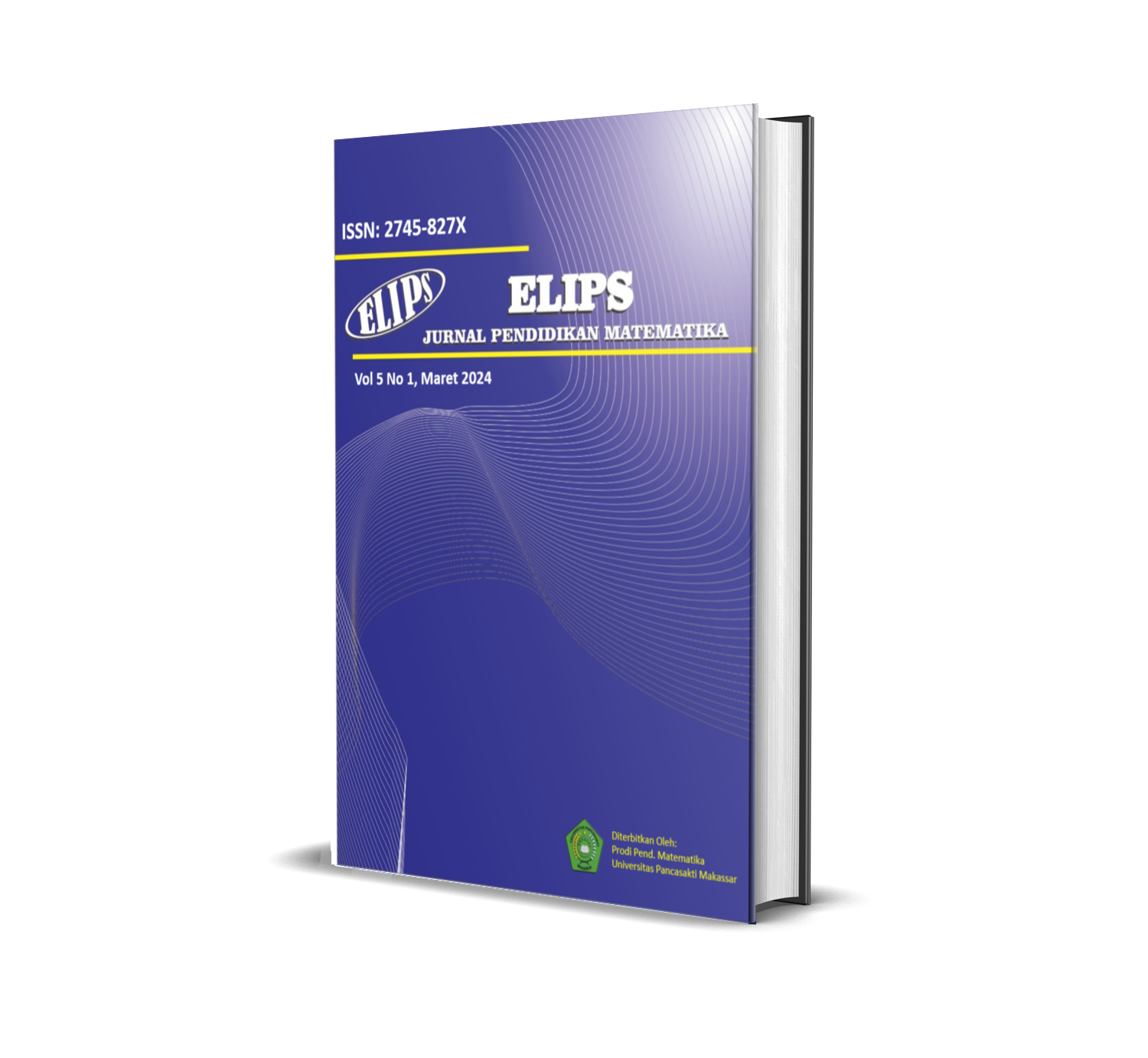EFIKASI DIRI MATEMATIKA DALAM PEMBELAJARAN DARING ASINKRON: DAMPAK FASILITATOR DAN HAMBATAN PADA MAHASISWA TEKNIK
Abstract
Matematika memegang peran penting dalam menentukan pencapaian akademik dan kompetensi profesional dalam pendidikan teknik, yang sering kali dipengaruhi oleh efikasi diri matematika. Hanya sedikit penelitian yang telah mengeksplorasi hubungan antara efikasi diri matematika dan pencapaian matematika dalam konteks asinkron. Penelitian ini bertujuan untuk menyelidiki pengaruh fasilitator dan hambatan pembelajaran asinkron terhadap efikasi diri matematika dan pencapaian matematika mahasiswa. Penelitian ini merupakan penelitian kuantitatif non-eksperimental. Sebanyak 320 mahasiswa berpartisipasi secara sukarela dalam penelitian ini dan mengisi kuesioner. Hubungan antara variabel diteliti menggunakan model persamaan struktural partial least squares (SEM-PLS). Hasil penelitian menunjukkan bahwa fasilitator pembelajaran daring memiliki pengaruh yang signifikan terhadap efikasi diri matematika mahasiswa, namun tidak berpengaruh langsung terhadap hasil belajar matematika. Penghambat dalam kuliah daring asinkron tidak berpengaruh signifikan terhadap efikasi diri dan hasil belajar matematika. Pengaruh positif dan signifikan dari efikasi diri terhadap hasil belajar membuat efikasi diri memiliki fungsi sebagai variabel media penuh antara hubungan fasilitator dan hasil belajar matematika.
References
Alves, M., Rodrigues, C. S., Rocha, A. M. A. C., & Coutinho, C. (2016). Self-efficacy, mathematics’ anxiety and perceived importance: an empirical study with Portuguese engineering students. European Journal of Engineering Education, 41(1), 105–121. https://doi.org/10.1080/03043797.2015.1095159
Bandura, A., & Adams, N. E. (1977). Analysis of self-efficacy theory of behavioral change. Cognitive Therapy and Research, 1(4), 287–310.
Chung, J. Y., & Jeong, S. H. (2023). Korean University Students’ Attitudes, Perceptions, and Evaluations of Asynchronous Online Education in Korean Higher Education. International Journal of Learning, Teaching and Educational Research, 22(5), 344–358. https://doi.org/10.26803/ijlter.22.5.17
Foley, A. E., Herts, J. B., Borgonovi, F., Guerriero, S., Levine, S. C., & Beilock, S. L. (2017). The Math Anxiety-Performance Link: A Global Phenomenon. Current Directions in Psychological Science, 26(1), 52–58. https://doi.org/10.1177/0963721416672463
Getahun, D. A., Adamu, G., Andargie, A., & Mebrat, J. D. (2016). Predicting mathematics performance from anxiety, enjoyment, value, and self-efficacy beliefs towards mathematics among engineering majors. Bahir Dar Journal of Education, 16(1).
Gonzales, B. B., Iraola-Real, I., Choquehuanca, E. G., Talledo, R. A., & Vargas, Y. I. F. (2019). Self-Efficacy And Its Effect On Anxiety And Performance In Mathematics In Aspiring to Career in Engineering. 2019 International Symposium on Engineering Accreditation and Education (ICACIT), 1–4. https://doi.org/10.1109/ICACIT46824.2019.9130366
Hair, J., & Alamer, A. (2022). Partial Least Squares Structural Equation Modeling (PLS-SEM) in second language and education research: Guidelines using an applied example. Research Methods in Applied Linguistics, 1(3), 100027. https://doi.org/10.1016/j.rmal.2022.100027
Hair, J. F., Risher, J. J., Sarstedt, M., & Ringle, C. M. (2019). When to use and how to report the results of PLS-SEM. European Business Review, 31(1), 2–24. https://doi.org/10.1108/EBR-11-2018-0203
Hashim, N. H. C., & Osman, K. (2021). Teaching and Learning by Using Online Application during Movement Control Order. International Journal of Academic Research in Progressive Education and Development, 10(2). https://doi.org/10.6007/ijarped/v10-i2/10143
Henseler, J., Ringle, C. M., & Sarstedt, M. (2015). A new criterion for assessing discriminant validity in variance-based structural equation modeling. Journal of the Academy of Marketing Science, 43(1), 115–135. https://doi.org/10.1007/s11747-014-0403-8
Irfan, M., Kusumaningrum, B., Yulia, Y., & Widodo, S. A. (2020). CHALLENGES DURING THE PANDEMIC: USE OF E-LEARNING IN MATHEMATICS LEARNING IN HIGHER EDUCATION. Infinity Journal, 9(2), 147. https://doi.org/10.22460/infinity.v9i2.p147-158
Kara, N. (2021). Enablers and barriers of online learning during the covid-19 pandemic: A case study of an online university course. Journal of University Teaching and Learning Practice, 18(4). https://doi.org/10.53761/1.18.4.11
Klein, H. J., Noe, R. A., & Wang, C. (2006). MOTIVATION TO LEARN AND COURSE OUTCOMES: THE IMPACT OF DELIVERY MODE, LEARNING GOAL ORIENTATION, AND PERCEIVED BARRIERS AND ENABLERS. Personnel Psychology, 59(3), 665–702. https://doi.org/10.1111/j.1744-6570.2006.00050.x
Liebendörfer, M., Göller, R., Gildehaus, L., Kortemeyer, J., Biehler, R., Hochmuth, R., Ostsieker, L., Rode, J., & Schaper, N. (2022). The role of learning strategies for performance in mathematics courses for engineers. International Journal of Mathematical Education in Science and Technology, 53(5), 1133–1152. https://doi.org/10.1080/0020739X.2021.2023772
Loo, C. W., & Choy, J. L. F. (2013). Sources of Self-Efficacy Influencing Academic Performance of Engineering Students. American Journal of Educational Research, 1(3), 86–92. https://doi.org/10.12691/education-1-3-4
Luttenberger, S., Wimmer, S., & Paechter, M. (2018). Spotlight on math anxiety. In Psychology Research and Behavior Management (Vol. 11, pp. 311–322). Dove Medical Press Ltd. https://doi.org/10.2147/PRBM.S141421
McMinn, M., Aldridge, J., & Henderson, D. (2021). Learning environment, self-efficacy for teaching mathematics, and beliefs about mathematics. Learning Environments Research, 24(3), 355–369. https://doi.org/10.1007/s10984-020-09326-x
Northey, G., Bucic, T., Chylinski, M., & Govind, R. (2015). Increasing Student Engagement Using Asynchronous Learning. Journal of Marketing Education, 37(3), 171–180. https://doi.org/10.1177/0273475315589814
Özturk, M. (2021). Asynchronous Online Learning Experiences of Students in Pandemic Process: Facilities, Challenges, Suggestions. Turkish Online Journal of Qualitative Inquiry. https://doi.org/10.17569/tojqi.767378
Peters, M. L. (2013). EXAMINING THE RELATIONSHIPS AMONG CLASSROOM CLIMATE, SELF-EFFICACY, AND ACHIEVEMENT IN UNDERGRADUATE MATHEMATICS: A MULTI-LEVEL ANALYSIS. International Journal of Science and Mathematics Education, 11(2), 459–480. https://doi.org/10.1007/s10763-012-9347-y
Radević, L., & Milovanović, I. (2023). Current Trends in Math Anxiety Research: a Bibliometric Approach. International Journal of Science and Mathematics Education. https://doi.org/10.1007/s10763-023-10424-4
Regmi, K., & Jones, L. (2020). A systematic review of the factors – enablers and barriers – affecting e-learning in health sciences education. BMC Medical Education, 20(1), 91. https://doi.org/10.1186/s12909-020-02007-6
Sarstedt, M., Hair, J. F., Cheah, J. H., Becker, J. M., & Ringle, C. M. (2019). How to specify, estimate, and validate higher-order constructs in PLS-SEM. Australasian Marketing Journal, 27(3), 197–211. https://doi.org/10.1016/j.ausmj.2019.05.003
Sarstedt, M., Hair, J. F., Nitzl, C., Ringle, C. M., & Howard, M. C. (2020). Beyond a tandem analysis of SEM and PROCESS: Use of PLS-SEM for mediation analyses! International Journal of Market Research, 62(3), 288–299. https://doi.org/10.1177/1470785320915686
Sierra, C., Boente, C., Zitouni, A., Baelo, R., & Rosales-Asensio, E. (2024). Resilient Strategies for Internet-Based Education: Investigating Engineering Students in the Canary Islands in the Aftermath of COVID-19. Sustainability (Switzerland), 16(4). https://doi.org/10.3390/su16041574
Teresa López-Díaz, M., & Peña, M. (2021). Mathematics Training in Engineering Degrees: An Intervention from Teaching Staff to Students. Mathematics. https://doi.org/10.3390/math
Tossavainen, T., Rensaa, R. J., Haukkanen, P., Mattila, M., & Johansson, M. (2021). First-year engineering students’ mathematics task performance and its relation to their motivational values and views about mathematics. European Journal of Engineering Education, 46(4), 604–617. https://doi.org/10.1080/03043797.2020.1849032
Usher, E. L., & Pajares, F. (2009). Sources of self-efficacy in mathematics: A validation study. Contemporary Educational Psychology, 34(1), 89–101. https://doi.org/10.1016/j.cedpsych.2008.09.002
Yuyun, I. (2023). Investigating university student engagement in online learning: A case study in EFL classroom. Indonesian Journal of Applied Linguistics, 12(3), 648–667. https://doi.org/10.17509/ijal.v12i3.46035
Zakariya, Y. F. (2021). Self-Efficacy Between Previous and Current Mathematics Performance of Undergraduate Students: An Instrumental Variable Approach to Exposing a Causal Relationship. Frontiers in Psychology, 11. https://doi.org/10.3389/fpsyg.2020.556607
Zakariya, Y. F., Nilsen, H. K., Goodchild, S., & Bjørkestøl, K. (2022). Self-efficacy and approaches to learning mathematics among engineering students: empirical evidence for potential causal relations. International Journal of Mathematical Education in Science and Technology, 53(4), 827–841. https://doi.org/10.1080/0020739X.2020.1783006








